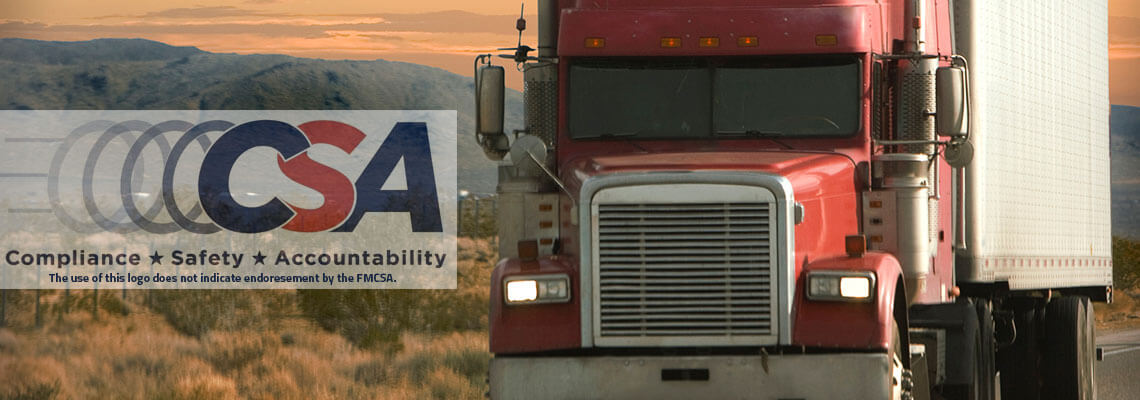TRUCKING TRAINING
CSA Basics

The FMCSA’s CSA basics program changed the ways carriers and drivers address safety issues. This series of videos provides a brief overview of what CSA is, how it affects safety ratings, and steps to take to avoid violations.
Included Modules
CSA Minutes
This series addresses broken or discolored windshields, the impact of CSA violations, when to intervene with a driver, a reminder of the violation of driving more than 11 hours, faulty tires, driving without required paperwork, driving without a valid CDL, leaving vehicles unattended while fueling, failure to retain 7 days of logs, failure to use caution for hazardous conditions, failure to wear hearing aids or glasses, securely fastening the hood, improper flag placement, improperly loaded cargo, inoperative headlamps and tail lights, leaking fluid, cargo securement, failure to do a pre-trip inspection, record of duty status, alcohol possession, seatbelt use, smoking with a HazMat load, speeding, and texting while driving.
CSA Basics Driver’s Series
This series is geared toward providing the professional driver with information regarding the new federal safety initiative CSA. It contains videos on the violations and severity of the Controlled Substances and Alcohol BASIC, Crash Indicator BASIC, Driver Fitness BASIC, HazMat Compliance BASIC, HOS Compliance BASIC, Unsafe Driving BASIC, and Vehicle Maintenance BASIC.
CSA Manager’s Series
This series explains what CSA is, why it is needed, how it works, and the role of the carrier and driver in CSA. Discusses the controlled substance/alcohol BASIC, crash indicator BASIC, driver fitness BASIC, HazMat compliance BASIC, HOS compliance BASIC, unsafe driving BASIC, and vehicle maintenance BASIC.
CSA Hours of Service
This series discusses the updated Hours of Service regulations, including the 14-hour window, 11-hour limit, 60-70 hour limit, 30-minute break and 34 hour restart, on-duty time, travel time, off-duty time, the sleeper berth provision, the driver’s daily logbook, and the interstate truck driver guide to HOS.


